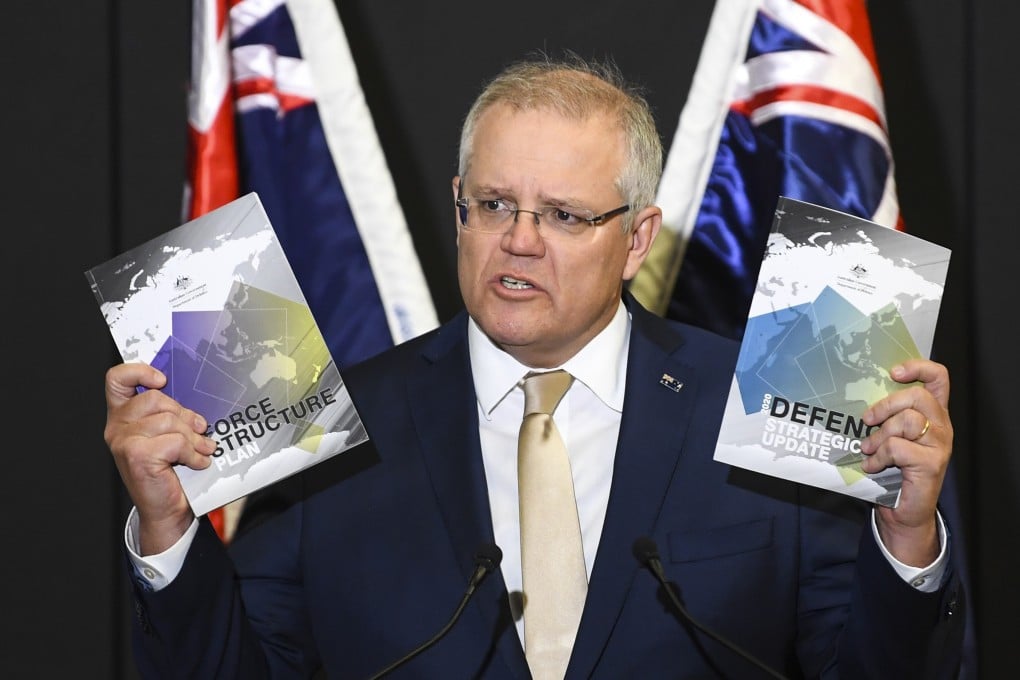Advertisement
Australia boosts defence spending by 40 per cent as China tensions rise
- PM Scott Morrison said US$186 billion will be spent over the next decade to ‘maintain regional security and deter or respond to aggression in the Indo-Pacific’
- Canberra’s relations with Beijing are increasingly strained over trade, the South China Sea, Huawei, espionage allegations, and Hong Kong
Reading Time:3 minutes
Why you can trust SCMP

Australian Prime Minister Scott Morrison on Wednesday announced a significant increase in defence spending to boost the country’s military prowess in the Indo-Pacific, amid jitters about China’s growing power in the region.
In a major speech in Canberra, Morrison said the government would spend A$270 billion (US$186 billion) on defence over the next decade, up nearly 40 per cent from the A$195 billion pledged under its previous strategic review in 2016.
Warning that Australia must prepare for a post-pandemic world that would be “poorer, more dangerous and more disorderly”, Morrison said the country faced a “conflation of global economic and strategic uncertainty” not seen since World War II.
Advertisement
“The challenges and changing nature in the Indo-Pacific have meant we need a new approach and one that actively seeks to deter actions that are against our interests,” Morrison said. “These new capabilities will provide a strong credible deterrent in our region that will help provide the stability and security we need.”

Advertisement
Under the 2020 Defence Strategic Update and Force Structure Plan, the US ally will invest in new long-range missiles, cybersecurity capabilities and an underwater surveillance system as part of its efforts to “maintain regional security and deter or respond to aggression in the Indo-Pacific”.
Advertisement
Select Voice
Choose your listening speed
Get through articles 2x faster
1.25x
250 WPM
Slow
Average
Fast
1.25x